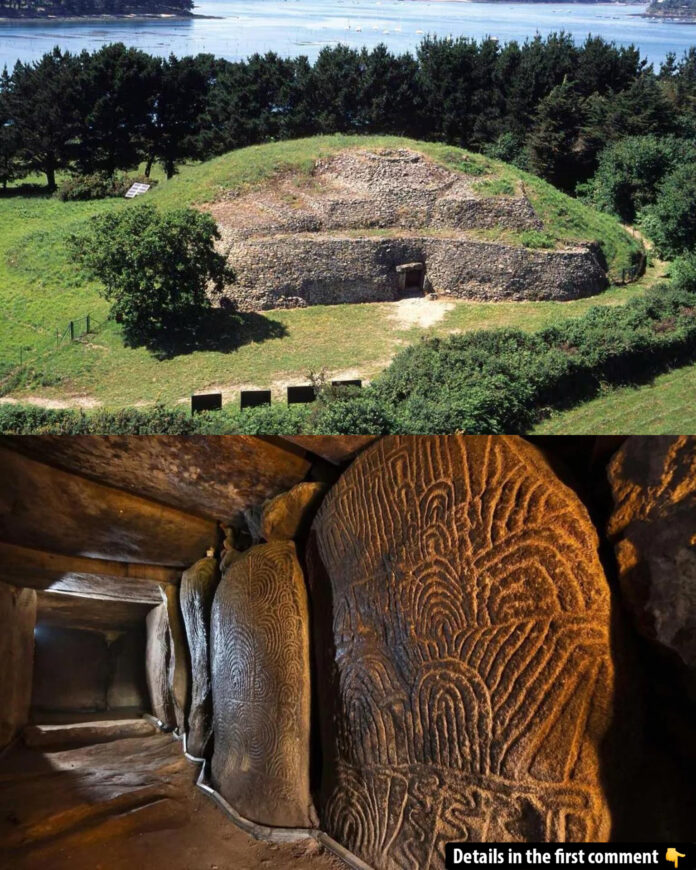Nestled within the Gulf of Morbihan in Brittany, France, lies Gavrinis Island, home to one of the most remarkable Neolithic monuments in Europe. The Gavrinis Passage Tomb, a structure that dates back over 5,000 years, offers an extraordinary glimpse into the ingenuity and artistry of our prehistoric ancestors. Known for its intricate carvings and meticulous construction, this site has captured the curiosity of archaeologists and tourists alike. Join us as we delve into the history, architecture, and mysteries of this timeless marvel.
Location and Accessibility

Gavrinis Island is situated in the Gulf of Morbihan, a region rich in megalithic heritage. Visitors can access the island via a short 15-minute boat ride from Larmor-Baden, a picturesque port town known for its oyster farming. As you approach the island, you’ll notice the Er Lannic stone circle nearby, partially submerged due to tidal changes—a silent sentinel to Gavrinis’ rich past. The journey itself sets the tone for what awaits: an encounter with history, art, and nature in perfect harmony.

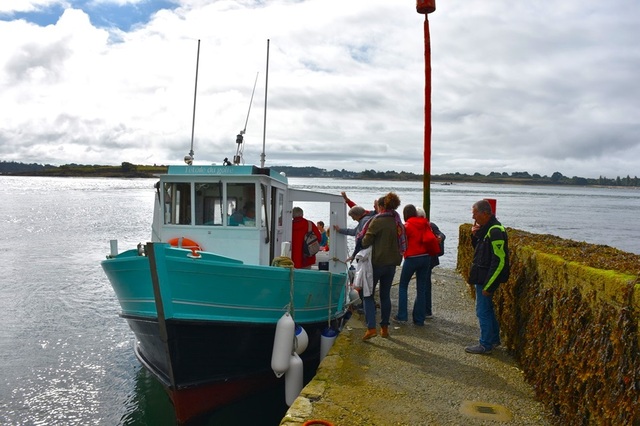
History of Gavrinis Passage Tomb
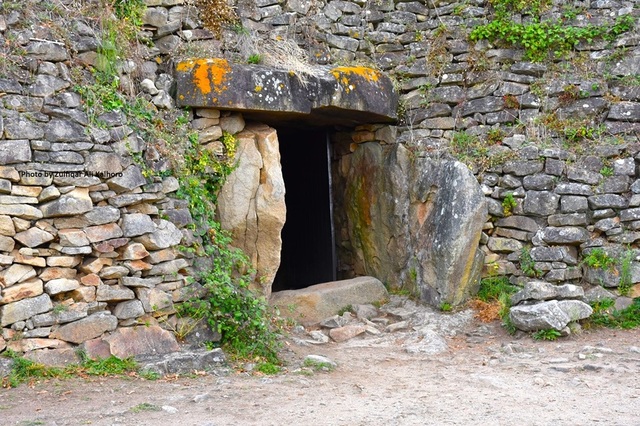
Constructed around 4000 BC, the Gavrinis Passage Tomb is a testament to the Neolithic community’s architectural and cultural prowess. Its discovery in 1835 marked the beginning of centuries of study, with major excavations conducted in the 20th century. Researchers uncovered artifacts, pottery, and tools dating back to 3500–3000 BC, providing invaluable insights into the lives of its creators. Interestingly, the tomb’s ceiling slab was found to share origins with stones from other megalithic sites in Brittany, hinting at a broader network of Neolithic construction.
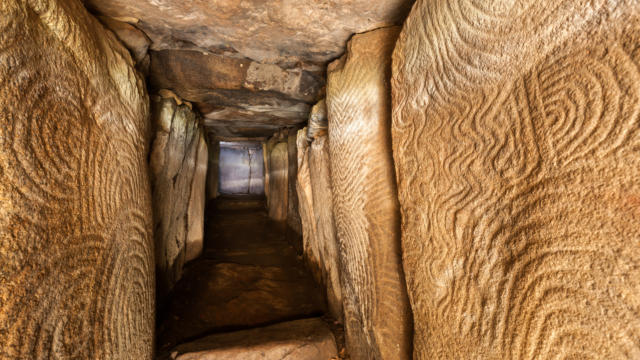
Uncover the mystery of who built the Cairn de Gavrinis – watch the video to explore this ancient monument and the secrets it holds about prehistoric builders!
Architectural Marvels of Gavrinis
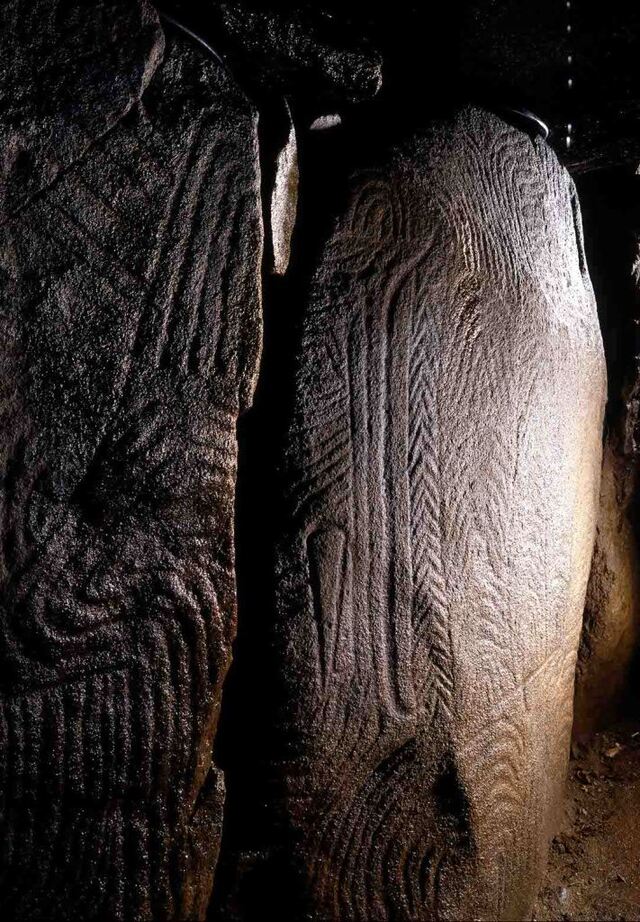
The Gavrinis mound spans 50 meters in diameter and rises 7 meters high, with a central burial chamber accessible through a 14-meter-long passage. This chamber, constructed from 50 massive stone slabs, is topped by a single 17-ton ceiling stone—a remarkable feat of engineering for its time. Studies revealed that the ceiling slab was originally part of an even larger 14-meter standing stone that once stood in Locmariaquer, connecting Gavrinis to other megalithic monuments in the region.
Intricate Megalithic Art
What truly sets Gavrinis apart is the intricate carvings that adorn 23 of the 29 slabs lining its passage. These designs include zigzags, concentric circles, spirals, and depictions of tools like axes and bows. Scholars believe these carvings may represent objects familiar to the Neolithic community or hold symbolic meanings. The meticulous preservation of these decorations makes Gavrinis one of the finest examples of megalithic art in Europe, offering a rare window into the aesthetic and cultural values of its creators.
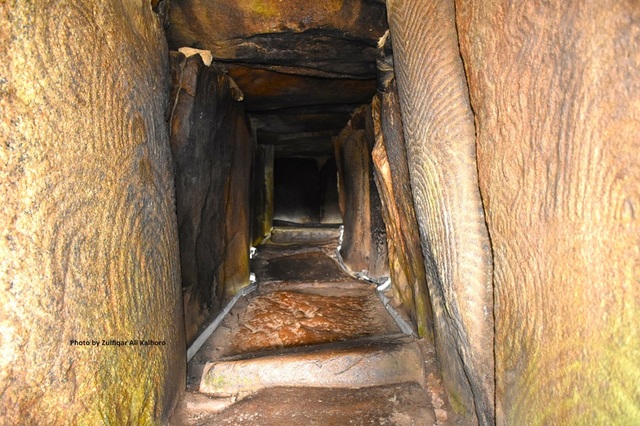
Astronomical Alignment and Mysteries
One of Gavrinis’ most fascinating features is its alignment with the Winter Solstice. On this day, sunlight penetrates the passage and illuminates the back wall of the tomb—a phenomenon that suggests a deep understanding of astronomy by the Neolithic builders. While the exact purpose of this alignment remains a mystery, it adds to the site’s allure, inviting speculation about the spiritual or ceremonial significance of the tomb.
Rediscovery and Modern Excavations
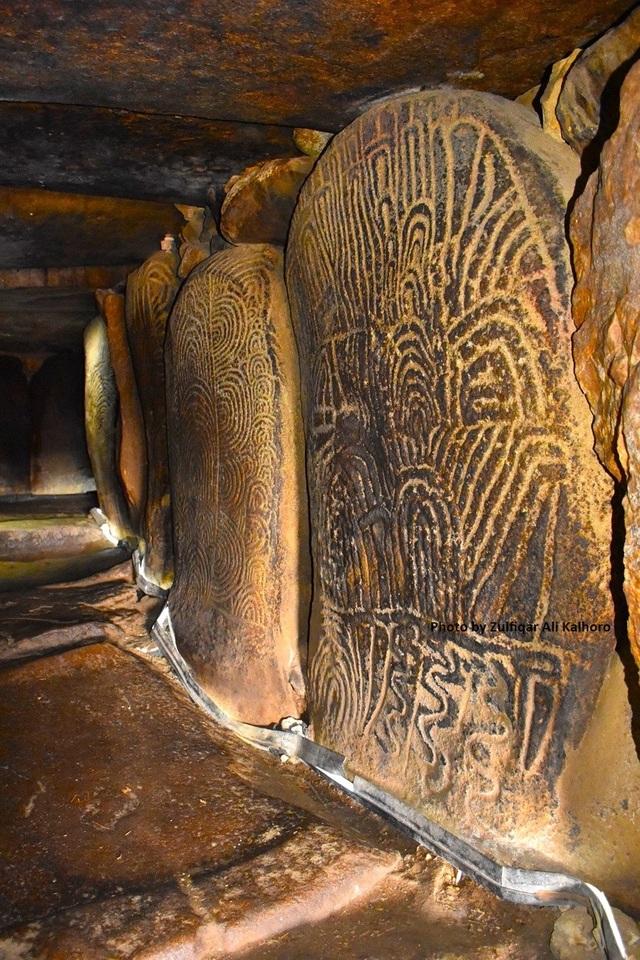
For centuries, the Gavrinis mound appeared as a natural hill, its secrets hidden beneath layers of earth and vegetation. Its rediscovery in 1835 led to a series of excavations, with significant progress made in the 1980s. Researchers uncovered evidence that some stones in the tomb were reused from earlier monuments, featuring carvings on both their internal and external faces. This discovery suggests that the site evolved over time, reflecting changing cultural practices and artistic expressions.
Cultural and Historical Importance
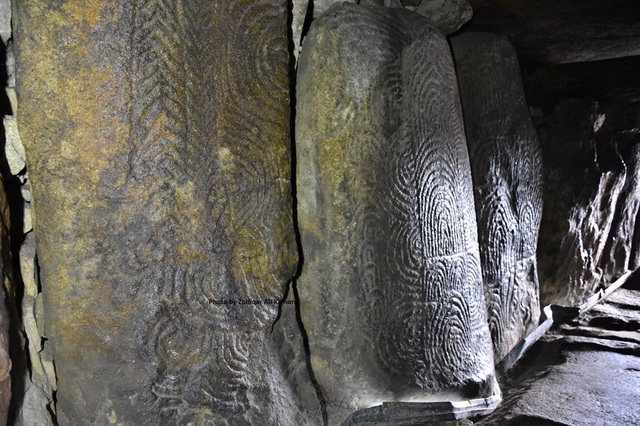
Gavrinis is more than just a burial site; it is a cultural treasure that embodies the ingenuity and artistry of the Neolithic era. Its construction required immense effort and collaboration, from quarrying and transporting massive stones to carving intricate designs. As such, it stands as a symbol of the sophisticated social and technical capabilities of its builders. The site also provides critical insights into the evolution of megalithic art, influencing our understanding of prehistoric Europe.
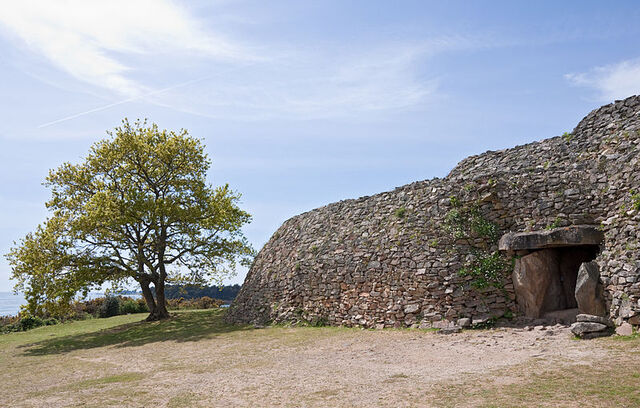
Video
Explore the Neolithic art and submerged stone circles of Gavrinis in Brittany, France – watch the Megalithomania video to uncover the ancient wonders of this fascinating site!
Conclusion: A Journey Through Time
The Gavrinis Passage Tomb is a testament to the creativity, ingenuity, and spirituality of the Neolithic people. From its architectural feats to its intricate carvings and astronomical alignments, the site offers a unique glimpse into a world long past. Visiting Gavrinis is more than just a trip to a historical site; it is an opportunity to connect with the roots of human civilization. As you stand amidst the carved stones and gaze at the surrounding landscape, you’ll feel a profound sense of wonder—an enduring legacy of the people who built this incredible monument.
This Neolithic marvel is not just a relic of the past; it is a bridge that connects us to the creativity and resilience of humanity’s early chapters. Gavrinis invites us to reflect on the achievements of our ancestors and inspires us to preserve their stories for generations to come.
